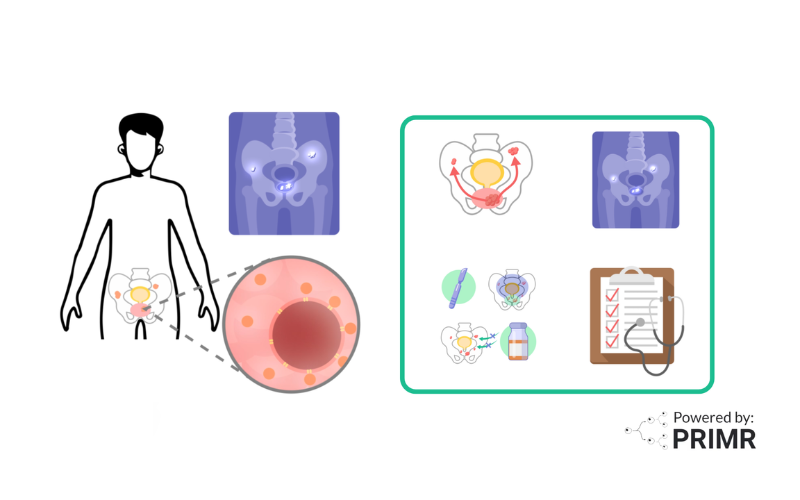Empowering Patients: PRIMR Unveils Commercial Products Library for Informed Health Choices
By: David Grew MD MPH
"We’re excited to share our content with patients to fill an unmet need in the marketplace of information."
∗ ∗ ∗
This week we’re launching the Commercial Products section of our patient education website. This has been a long time coming - and was not a decision we took lightly. But after much deliberation, and reviewing the engagement data and patient feedback on our existing content, we ultimately decided the benefits of adding patient-facing content about commercial products outweighed the risks.
From the start, PRIMR has been about clean, unbiased, highly credible doctor-created content. We’re committed to maintaining that high standard. It is a core value. However, I want to acknowledge that creating content about commercial products introduces unique challenges like unintentional bias, ethical considerations around financial conflicts of interest, risk of dated content amidst a dynamic healthcare landscape. These thorny issues are top of mind and we’ll constantly be evaluating our performance. I’m sure we’ll get some things wrong, and when we do, we’ll course-correct.
Ultimately, based on feedback from real patients, it seems there’s an unfilled need for simple explanations in the marketplace. So we’re forging ahead. Here’s our list of the benefits of providing PRIMR content for commercial products as we see it:
- Informed Decision-Making: Adding videos about commercially available products in the PRIMR patient education library will help patients make informed decisions about their healthcare. It provides them with knowledge about available tests and medical devices, enabling them to discuss potential options with their healthcare team. Our content often triggers patients to bring specific questions to their doctor, resulting in better-shared decision-making.
- Treatment Option Awareness: Some commercially available products may complement or assist in cancer diagnosis, treatment, or management. Awareness of these options through educational materials can empower patients to discuss with their healthcare providers whether such products could be beneficial in their specific case.
- Quality of Life Improvements: Certain medical devices or products can contribute to improving the quality of life for cancer patients. Educational resources can help patients understand how these products work and whether they might address specific concerns related to their treatment or side effects. For instance, the Oncotype test helps identify which women can safely omit chemotherapy - avoiding the potentially lifelong side effects and complications.
- Emerging Technologies: Cancer care is continually evolving with advancements in technology. Educational content on new and emerging tests or medical devices can keep patients informed about cutting-edge developments that may impact their treatment or overall well-being.
- Supporting Non-Profits and Research: Some commercially available products contribute a portion of their proceeds to cancer research or patient support organizations. Patients, through educational resources, may learn how their choices can support broader initiatives within the cancer community.
- Patient Advocacy: Knowledge about available products empowers cancer patients to advocate for themselves during discussions with healthcare providers. Informed patients can ask questions, express preferences, and actively participate in decisions related to their treatment and care.
- Holistic Approach to Care: A cancer patient education library that includes information on various products aligns with a holistic approach to cancer care. It recognizes that patient well-being is influenced by factors beyond medical treatment alone, and products addressing lifestyle, comfort, or supportive care play a role in holistic cancer care.
- Patient Empowerment: Providing information about commercially available products fosters patient empowerment. Understanding the options available in the market allows patients to take a proactive role in managing their health and treatment journey.
We’re excited to share our content with patients to fill an unmet need in the marketplace of information. We welcome feedback - please let us know what you think!
If you want your commercial product included in the PRIMR library, contact us at contact@primrmed.com.
FAQs:
How does PRIMR ensure the content about commercial products remains unbiased?
Our mission is to raise awareness about cancer-related topics, including available commercial products, without endorsing any specific brand. By committing to sharing only factual information about medical advancements to empower patients in their healthcare decisions, we maintain genuine, unbiased insights to support patients on their healthcare journey.
How frequently will PRIMR update the content on commercial products to ensure it reflects the most current information?
We aim to stay informed about advancements in healthcare, and our focus is on addressing the ongoing need for accurate and accessible information. Our goal is to foster knowledge and understanding in the medical community for the benefit of all.
How will PRIMR measure the impact of this new section on patient outcomes or decision-making processes?
While we don't have a specific measurement framework in place, we rely on various indicators to gauge the impact of our content. By analyzing engagement metrics and gathering feedback from healthcare professionals and patients, we can assess the effectiveness of our resources. This input serves as valuable guidance for refining our content strategy and creating more impactful resources in the future.
Other Posts

Nuclear Medicine: PSMA Treatment Explained from a Doctor’s Perspective

Nuclear Medicine: PSMA Imaging and Its Impact on Prostate Cancer Care
